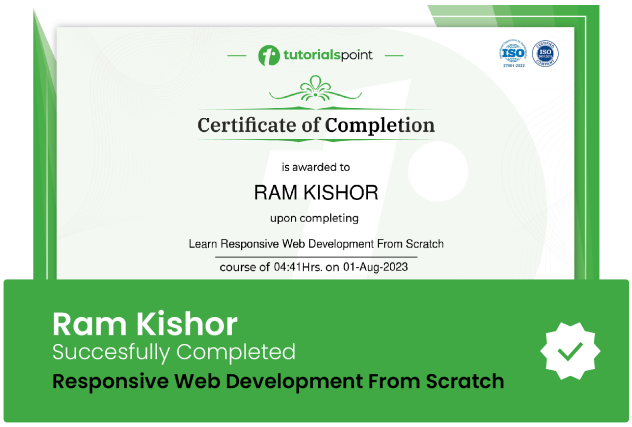Object-Oriented Analysis, Design and Programming with UML
Get to grips with various UML artifacts and object-oriented programming (OOP) concepts and simplify your software development process

Lectures -122
Duration -10 hours

30-days Money-Back Guarantee
Get your team access to 10000+ top Tutorials Point courses anytime, anywhere.
Course Description
UML makes it easier for developers and designers to specify, visualize, and document the requirement of a software system. This course will show you how to use the concepts of UML in the software development process.
The course starts with highlighting the learning objectives and explaining the installation process. You will learn to install Eclipse for Java and Visual Studio for C# and C++ on your machines. Next, you will understand the complexity of these software and how it can be solved using algorithms and object-oriented decomposition. Moving along, you will learn to use UML diagrams to perform object-oriented analysis with use cases. Next, you will understand the concepts of class and learn to represent it in UML using a class diagram. Later, you will use interaction diagrams to represent the interaction between objects of a use case and learn how to represent the behavior of an object using a state machine diagram. Finally, you will learn to understand what refactoring is and get an overview of more UML diagrams—package, component, and deployment.
By the end of this course, you will be able to use object-oriented techniques to design and develop software systems in Java, C#, and C++ with the help of UML diagrams.
Code files are placed here:
https://github.com/PacktPublishing/Object-Oriented-Analysis-Design-Programming-with-UML
Audience:
This course is designed for anyone who wants to learn and understand how to apply UML concepts in analyzing and designing software. Those interested in learning how to apply object-oriented principles in C#, C++, or Java, will also find this course useful.
Goals
What will you learn in this course:
- Become familiar with UML
- Understand the concepts of OOP
- Find out how to write quality use cases
- Use UML diagrams to analyze and represent classes
- Improve the code design with refactoring
- Implement object-oriented design in Java, C++, and C#
Prerequisites
What are the prerequisites for this course?
- A basic understanding of programming concepts is necessary to get started with this course.

Curriculum
Check out the detailed breakdown of what’s inside the course
Introduction
3 Lectures
-
Course Overview 01:14 01:14
-
Installing Eclipse for Java 01:45 01:45
-
Installing Visual Studio for C# & C++ 03:10 03:10
Basics
4 Lectures

Object-Oriented Analysis
14 Lectures

Object-Oriented Design and Programming
27 Lectures

Reckless Driver Implementation
16 Lectures

Interaction Diagrams
21 Lectures

State Machine Diagram
23 Lectures

Refactoring
7 Lectures

More UML Diagrams
7 Lectures

Instructor Details

Packt Publishing
eCourse Certificate
Use your certificate to make a career change or to advance in your current career.

Our students work
with the Best


































Related Video Courses
View MoreAnnual Membership
Become a valued member of Tutorials Point and enjoy unlimited access to our vast library of top-rated Video Courses
Subscribe now
Online Certifications
Master prominent technologies at full length and become a valued certified professional.
Explore Now


 Updated on Apr, 2024
Updated on Apr, 2024
 Language - English
Language - English